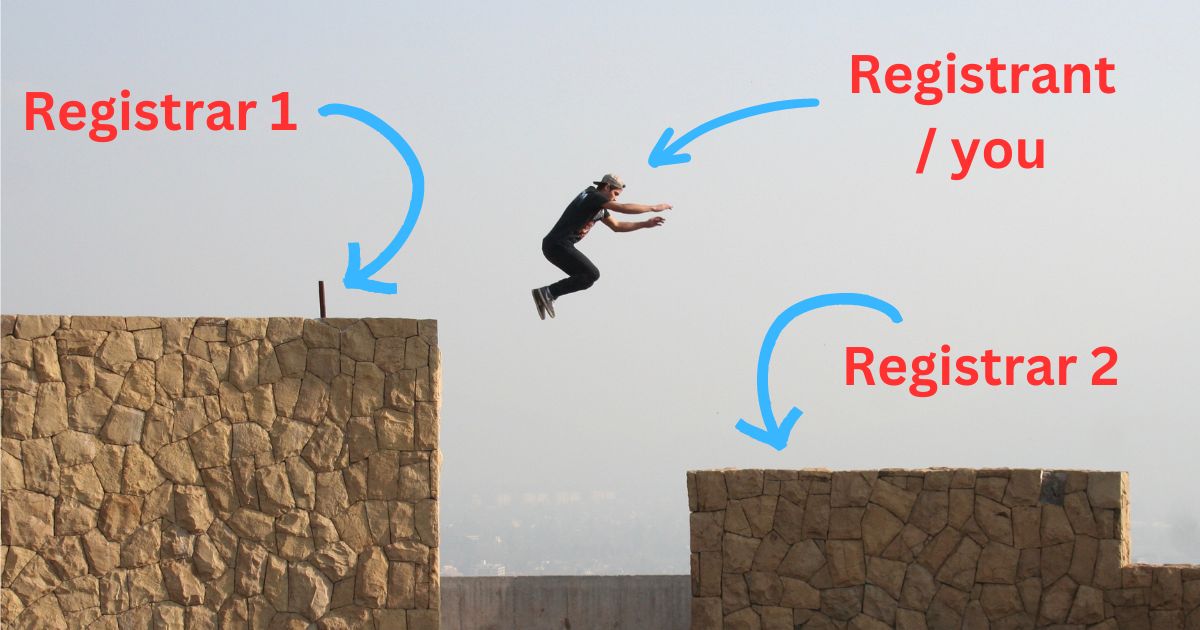Registrar hopping is a cost-saving strategy employed to efficiently manage domain names. Instead of renewing a domain with the current registrar, this technique involves transferring the domain to a different registrar that offers cheaper renewal fees.

Registrar hopping, a savvy technique to optimize expenses when managing domain names, allows website owners to save money while ensuring their online presence remains intact. By carefully choosing domain name registrars based on competitive pricing, both during initial registration and subsequent renewals, significant cost reductions can be achieved over time.
Traditionally, when individuals or businesses decide to launch a new website or online project, they head to their preferred registrar and register a top-level domain, such as example.com. The registrar charges a one-time registration fee, say $10, covering the first year of domain usage. For each subsequent year, a renewal fee is incurred, often substantially higher that the initial registration fee. For this example, let's say that the domain renewal fee of our original registrar is $15.
How Does Registrar Hopping Work?
The registrar hopping technique involves the following steps to save on domain registrations and renewals:
Step 1: Save on Domain Registration
Before registering a domain for the first time, it is prudent to compare registration fees among different registrars. Instead of immediately opting for a preferred registrar and paying $10, explore other options. Some registrars may offer promotional campaigns with rates as low as $0.99, aiming to attract new customers. By using domain price comparison websites like domcomp.com, tld-list.com or tldes.com, which allow easy fee comparison across various registrars, you can identify the most cost-effective option.
Step 2: Transfer Instead of Renewal
Approximately 1-2 months before a domain's expiration, it's time to reevaluate renewal fees with different registrars. Instead of automatically renewing with the current registrar at a standard rate of, say, $15, explore other registrars that may offer lower renewal fees, possibly around $8 or less. This approach can result in considerable savings, often up to 40% compared to the initial registrar's price. Domcomp.com and tld-list.com are valuable resources to compare renewal fees from various registrars.
Though registrar hopping can lead to cost-effective domain management, the transfer process requires careful consideration. When moving an existing domain from one registrar to another, specific formalities must be followed. These include unlocking the domain with the current registrar and obtaining an authorization code. Additionally, a waiting period, usually around 5 days, is necessary before the domain can be transferred to the new registrar.
History of Registrar Hopping
The concept of registrar hopping, as a cost-saving approach for domain management, traces its origins back to 2018 when the term was coined by Karen Tamrazyan. Karen first shared the registrar hopping technique through blog posts and YouTube videos. In these resources, he elaborated on the step-by-step process of registrar hopping, emphasizing its potential benefits and the savings that could be achieved by adopting this approach.
Conclusion
In conclusion, registrar hopping is a strategic approach to reduce expenses associated with domain registrations and renewals. By conducting thorough fee comparisons and familiarizing yourself with the transfer process, website owners can make substantial savings over time while maintaining the quality and continuity of their online presence.